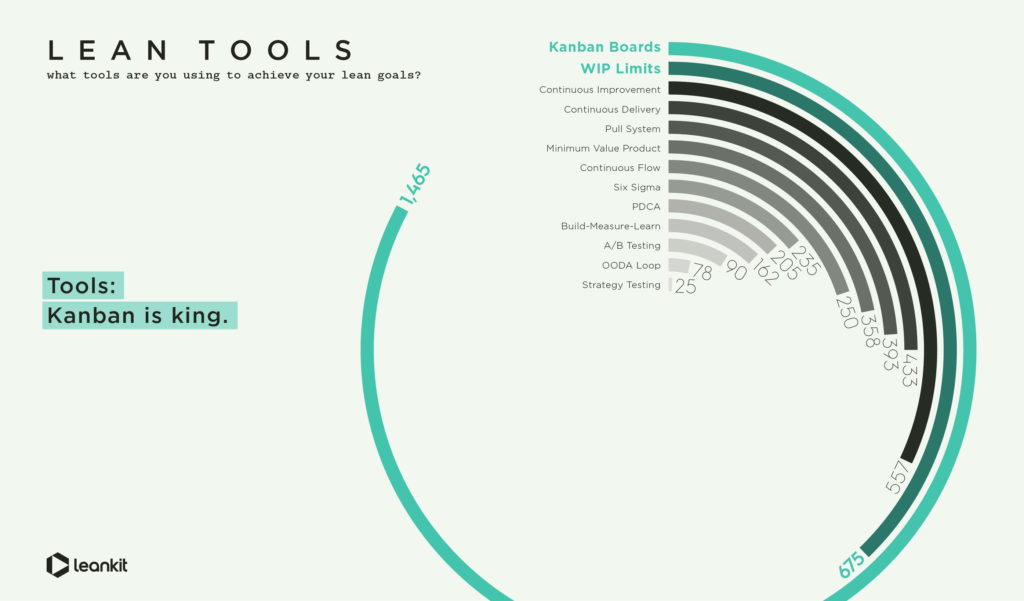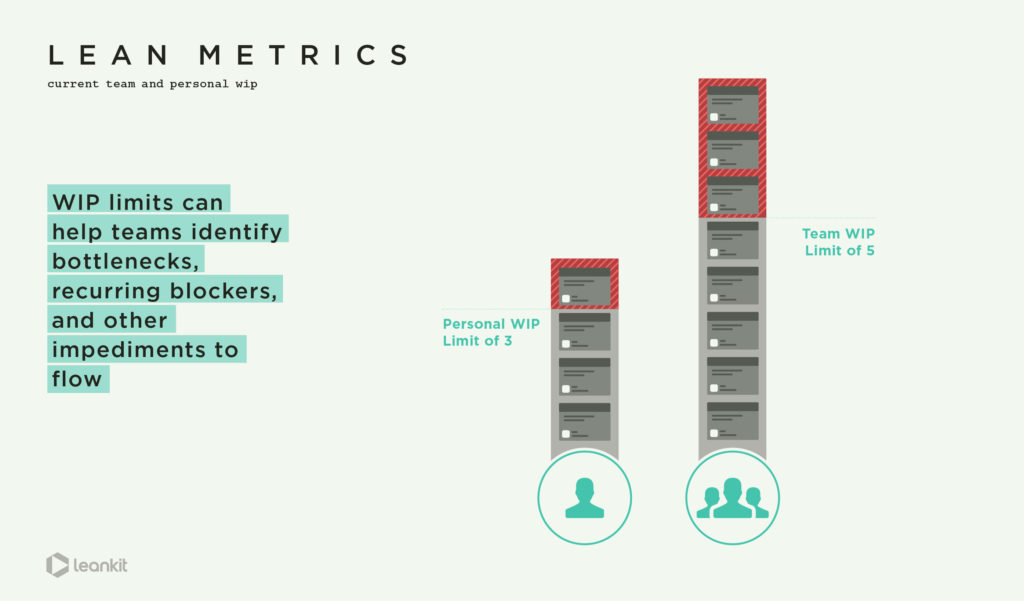
Part of the beauty of applying Lean to knowledge work is its versatility. Teams in every department — from Software Development to Organizational Development, IT Operations to Marketing Operations — practice Lean in their daily work.
The workflows, organizational structures, work types, and associated challenges for each of these teams play out in diverse ways. Lean has universal applications, but it’s not universally applied in the same way. There are, however, some overarching trends: Flow is top priority, Kanban is king, and WIP (work in process) is the most common metric.
With flow top of mind, it makes sense that the majority of respondents named Kanban boards as their Lean tool of choice. Other tools associated with Kanban, such as WIP limits, continuous improvement, continuous delivery, and pull system, round out the top five.
Top Lean Tool: Kanban Boards

Survey respondents reported that Kanban boards are by far the most widely used Lean tool: Kanban boards enable teams and organizations to visualize and improve the flow of work at the portfolio, program, and team level.
Top Metric: WIP Limits

If the goal is to create flow, implementing WIP (work in process) limits is the way to get there. WIP limits, the second-most used Lean tool, are the key element of practicing Kanban. WIP limits are an enabling constraint that allows teams to identify bottlenecks and mitigate context switching. This empowers teams with the tools to actively improve the flow of work through their system.
Our survey data shows that teams who use Kanban boards and WIP limits experience the highest levels of project success.
About the Lean Business Report
In September 2015, we launched the inaugural Lean Business Survey to gauge the adoption of Lean across all disciplines of knowledge work. The Lean Business Report combines our exclusive survey research with educational content from thought leaders in the Lean for business space. Between September and November 2015, we received more than 3,000 responses from executives, consultants, and team members representing a variety of industries and hailing from 75 countries.
Recommended Reading
To learn more about Kanban, we recommend these excellent resources:


![A Global Collaborative Work Management Blueprint [Video]](https://blog.planview.com/wp-content/uploads/2019/07/A-Global-Collaborative-Work-management-blueprint.png)

